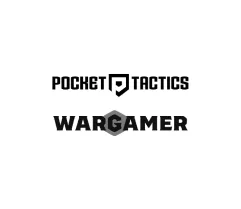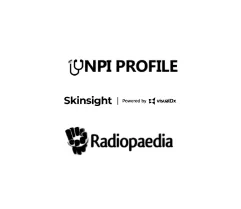Collective Intelligence
We’re not just another ad network. Publisher Collective is your smart and strategic advertising partner.
We connect brands to audiences and publishers to revenue.
We work across both sides of the digital advertising ecosystem - with deep category expertise and audience understanding, providing our partners with the actionable insights that they crave, resulting in performance without compromise.
We're your intelligent advertising partner.
We don’t just group publishers by category, we connect them by context, behavior, and intent. That’s how we uncover what audiences care about, how they engage, and how to optimize performance.
Who we work with
Take a look at some of the people we’ve worked with and what they have to say.
Who we help
Powered by
Collective Intelligence
Each content category is more than a vertical. It's a high performing collective of aligned publishers, communities and engaged audiences.
Category
Category
Category Intelligence
Category expertise and deep understanding of high-value content verticals.
We specialize in high-interest categories, like gaming, tech, health, and education, giving us unmatched knowledge of the context, content, and commercial models that drive engagement.
Audience
Audience
Audience Intelligence
A true understanding of your audiences and the ways they align and overlap.
Because our categories are curated, we understand where and how audiences are alike, what people really care about, and how they behave across communities.
Actionable
Actionable
Actionable Intelligence
Actionable insights that drive better business decisions. Our intelligence doesn’t just report, it reveals.
We’re sitting on rich data sets, so we surface what’s landing, what’s falling short, and what to do next, not just to guide our own optimization, but to sharpen yours too.
Performance
Performance
Performance without compromise
For Publishers: Protect your users with tech that prioritizes experience and impact.
For Advertisers: Get results that don’t compromise on quality, context, or creative effectiveness.
Curated Categories.
Connected Audiences.
Each content category is more than a vertical. It’s a high-performing collective of aligned publishers, passionate communities, and engaged audiences.
We specialize in six key content categories, chosen for the connected behaviors and audience overlaps between them.
That’s what powers our deep audience understanding.
Each content category is more than a vertical. It’s a high-performing collective of aligned publishers, passionate communities, and engaged audiences. We specialize in six key content categories, chosen for the connected behaviors and audience overlaps between them.
That’s what powers our deep audience understanding.
The Publisher Collective Advantage
Smarter Strategy.
Stronger Results.
Better Partnership.
Insight beyond CPMs
We deliver effective strategies through a deep understanding of both sides of the ecosystem.
- Dual-sided visibility across publisher supply and advertiser demand
- Vertical expertise in high-performing content categories like gaming, tech, health, and education
- Audience-centric planning that connects content, context, and intent
- Built-in scale across adjacent categories without losing relevance
- Data-led decision support for better briefs, better targeting, and better outcomes
UX + Results
Our campaigns and monetization models are designed to deliver outcomes, not just outputs.
- Category-aligned targeting for better fit, stronger engagement, and higher conversions
- High-intent, high-attention communities that care about what they consume
- Contextual scale without fragmentation or risk
- Optimisation across both sides, improving campaign and monetisation performance together
- Tech that enables, not interrupts, with fast loads, high viewability, and smart formats
Hands-on service
We go beyond ad tech. We speak your language, understand your goals, and help you grow.
- For Publishers: We tailor strategy to your content, audience, and business, not just your ad stack
- For Advertisers: We match you with real audiences in trusted environments
- One integrated team across sales, service, and strategy
- Aligned on outcomes, not just transactions
- Proactive support to improve briefs, creative, and targeting at every stage
It’s not just what we offer.
It’s how we deliver it.

Our outcomes are powered by three key drivers that sit behind every campaign and partnership.
AdEngine Infrastructure
Strategic Service Layer
Data and Insights
This isn’t just about selling media. It’s about delivering strategic outcomes, powered by people, tech, and intelligence.
What our partners say
We’ve partnered with Publisher Collective since 2016 and have increased our collaboration a lot since then. They’ve become a major part of our monetization stack.
What I like about you is that I don't have a lot of work with monetization issues.
You handle this for me, so I can focus on providing great content, functionality, and user support.
5 years of good performance - Been working with Publisher Collective to maximize ad revenue for the past 5 years. Very happy with their technical expertise, one-v-one access and results.
They have very knowledgeable monetization specialists that were very approachable helping us with our strategic decisions. Loved that they could also help us with Google Core Web Vitals .
They just care
After working with various monetization services on a challenging website, I ended up very frustrated by either the performance or the, usually automated, service that made the operation unsustainable.
The team went out of their way to troubleshoot all issues and brought back great performance to the site where all others had given up. With Publisher Collective, you are really dealing with extremely responsive and professional people who listen and care.
Plus, their tech is extremely streamlined and easy to integrate.
I highly recommend them.
They have a reliable team that delivers excellent customer service. Our account manager provided great support and demonstrated impressive responsiveness. The team is knowledgeable and approachable, always willing to address our questions and concerns. They offer a wide range of tailored solutions that can benefit other companies seeking their services.
Snigel has been instrumental in helping us navigate cryptic ad policies, respect our user’s privacy, and increase ad revenue. Partnering with Snigel has optimized our ad stack and removed the challenge of managing things on our own.
Their ads have a good balance between visibility while still making sure the user experience is great and not too intrusive for the visitors. I worked with different ad partners, but Publisher Collective is the most personal and involved with me.
Publisher Collective has been fantastic to work with.
From the initial approach and work to integrate their various forms of advertising into our existing site design, to the evolving advertising opportunities and support.
From the beginning, each team member has been professional and knowledgeable in their area of expertise. It made onboarding easy, I’ve learned some great tips and received help on website issues. All of my worries about joining an ad network were put to rest once we started working together.
Ad partner for many years – Most ad partners want to maximize the number of ads above the fold. Publisher Collective is different. They maximize the revenue with unobtrusive ads below the fold. Further, they still offer support when most other ad companies reduced that to a minimum.
The most knowledgeable company.
I could list particular individuals, but a company that can bring in that kind of human level, deserves all the praise.
Great alternative to mainstream players. Publisher Collective delivers consistently CPMs which match and exceed much larger rivals. Their support is pretty good, you can always meet and get your questions answered quickly by helpful human beings.
From day one, when the Publisher Collective tags went live on our website, we were tremendously impressed by the immediate improvement in performance, on all levels. Revenues immediately jumped up over 20%, their tags are light and loas super fast, the ads appear on the page quicker, and the quality is noticeabily cleaner.
Our friends at Publisher Collective initially delivered a dramatic increase in ad revenue as promised. And they kept going. Pitching new ideas, new networks, new placements. When GDPR came along, they had solutions. When an algorithm changes, they ran A/B tests to see what would be the best.
I had tried several other ad inventory solutions previously and none of them had worked. However, with Publisher Collective, I was quite happy to see that I was earning 10 to 15% more during the initial few months. Once we optimized the number of ads and got several networks on board, the percent increased well beyond 40%.
Great company and support.
After working with various ad management companies, I can confidently say that Publisher Collective stands out as the most impressive I've had the pleasure of working with.
Our partnership with Publisher Collective has led to positive results for DeviceTests. We’ve experienced a considerable rise in ad revenue. Publisher Collective’s strategies have effectively allowed us to maintain a healthy balance between ad revenue and user experience. Their services have proven to be both valuable and successful.
Phenomenal at helping us get started monetizing our site, with excellent communication and technical assistance when necessary.
Since partnering with Publisher Collective, my website has seen a significant 2-3x increase in ad revenue over Google ads. The team is friendly, professional and very efficient to work with and I love how the ads are both unintrusive and relevant to my users. It's been a great experience and I’d certainly recommend them!

















